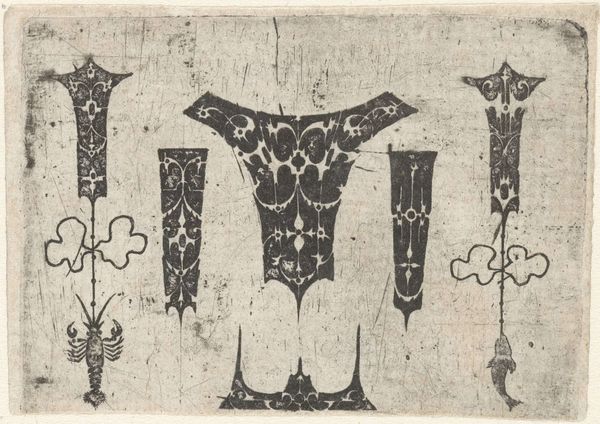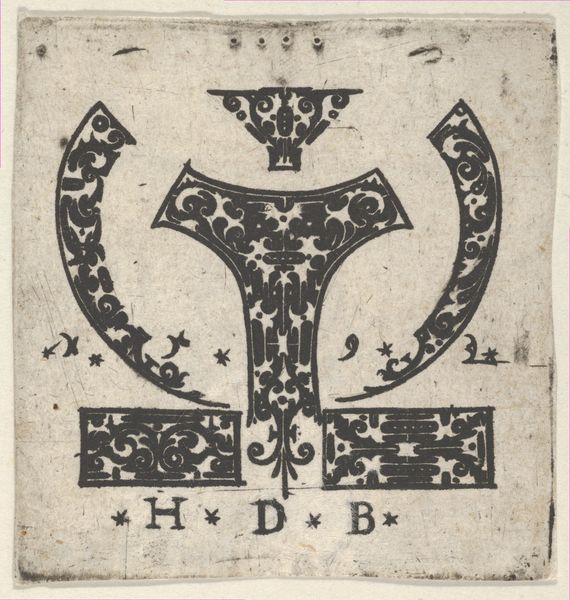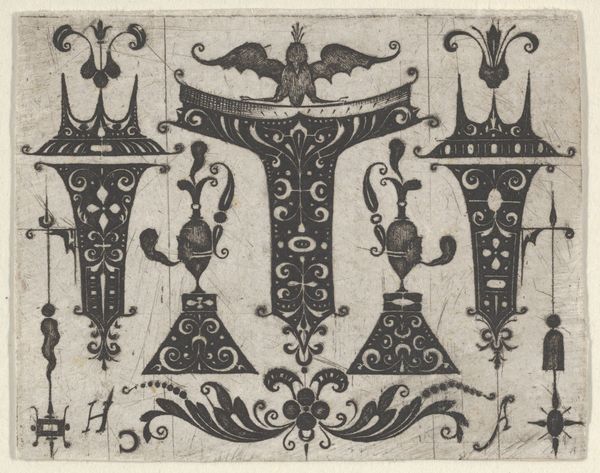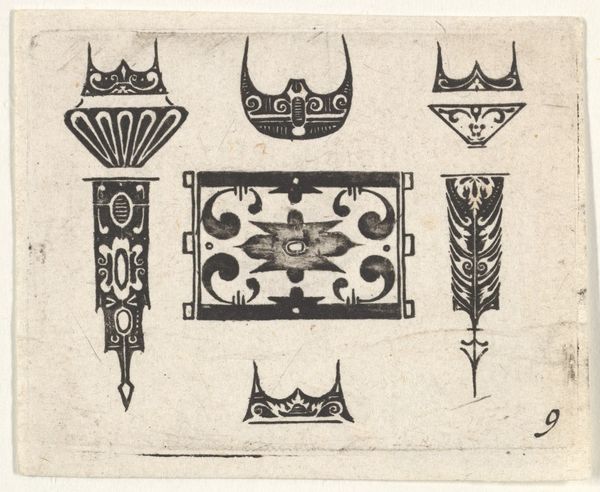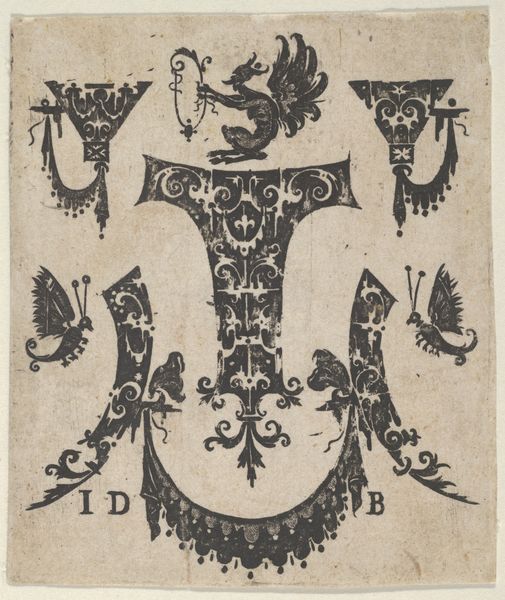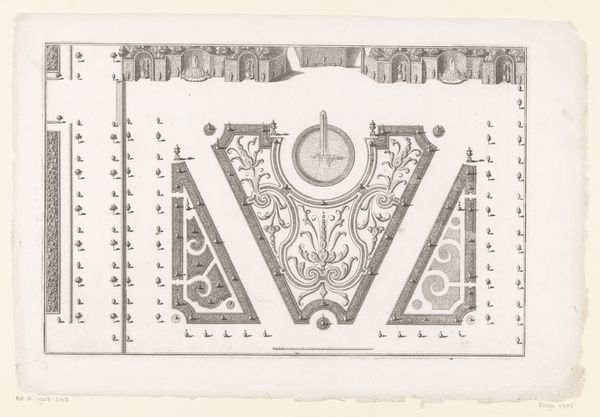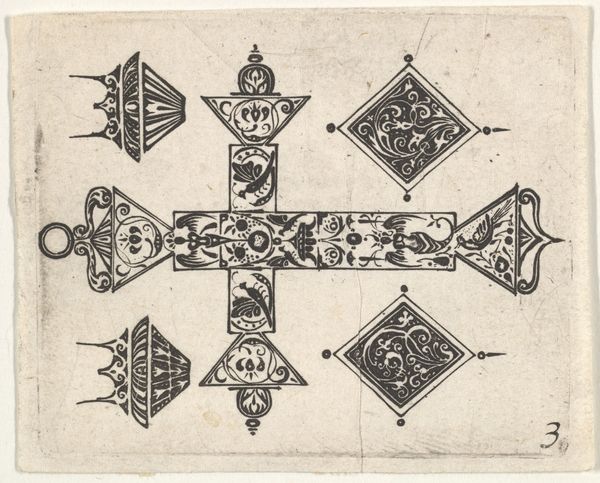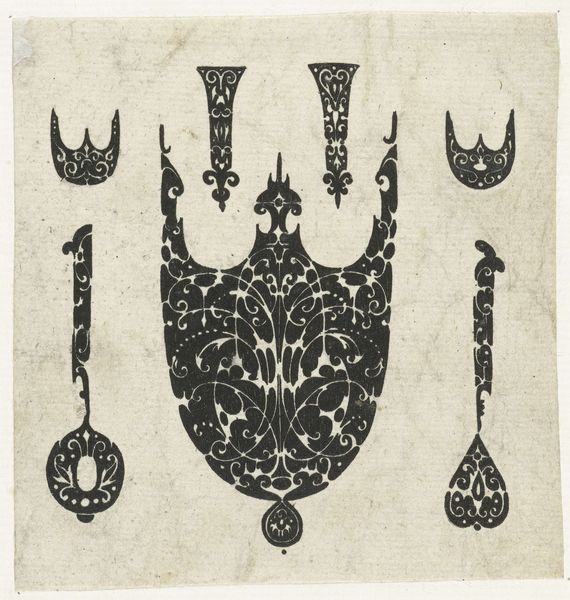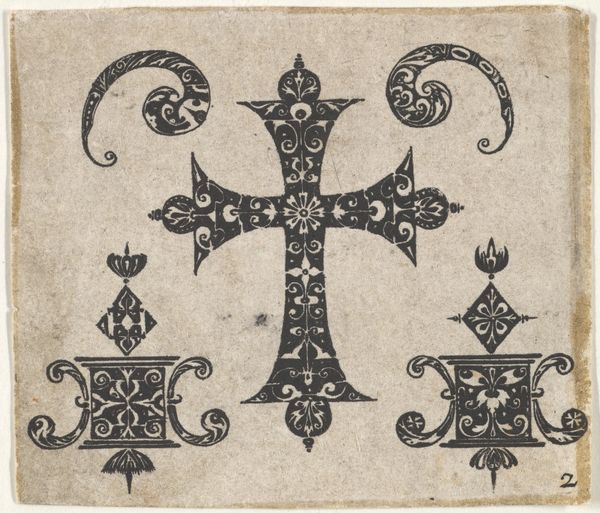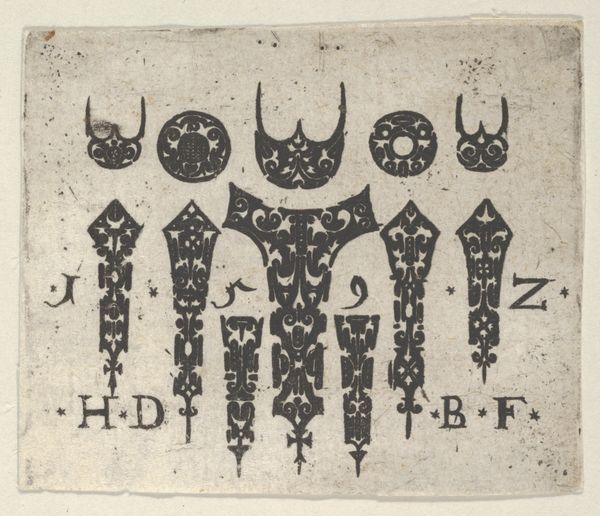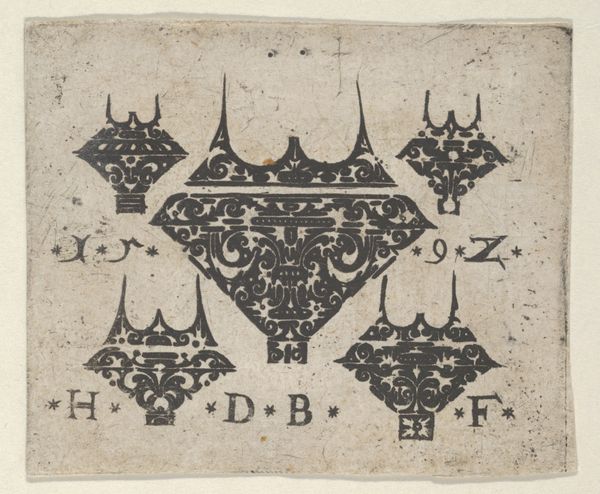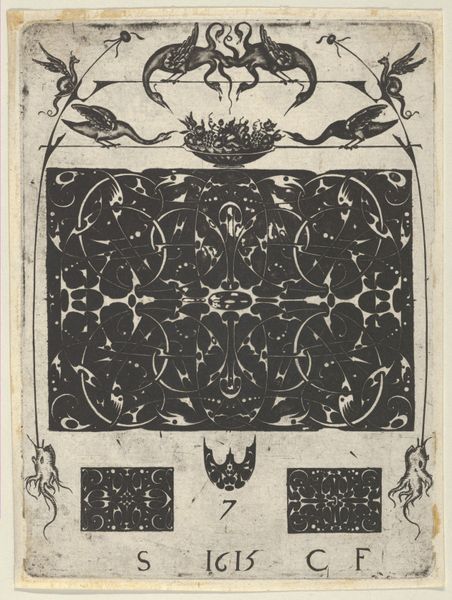
drawing, ornament, print, engraving
#
drawing
#
ornament
#
baroque
# print
#
geometric
#
engraving
Dimensions: Plate: 1 3/4 x 2 1/16 in. (4.5 x 5.2 cm)
Copyright: Public Domain
Curator: Let's discuss this striking "Blackwork Print with Eight Motifs" created between 1600 and 1620, crafted by Claes Jansz. Visscher. It's a captivating display of Baroque ornament, currently residing at the Metropolitan Museum of Art. What are your first thoughts on encountering it? Editor: My first thought is how graphic it is. The stark black shapes against the pale paper create a powerful contrast. The forms feel simultaneously ancient and modern. The array of distinct elements has this fascinating push and pull that I appreciate, creating almost like an intriguing, abstracted family of patterns. Curator: Precisely! The artist created these prints for artisans like goldsmiths and textile workers, functioning as an inspirational template for intricate detailing and the decorative embellishment so characteristic of the era. Editor: Absolutely. It's fascinating to see this historical artifact serving as almost a form of accessible pattern design. In our modern landscape oversaturated with design and imagery, this print invites a reflection on cultural standards in art, luxury, and what design choices become commonplace across class structures in various parts of society. The geometric rigor, alongside stylized florals, speaks to a desire for order, but also beauty in design. Curator: That intersection is where the work lives, indeed! The carefully selected geometric patterns and flora-derived shapes highlight the natural world transformed into idealized visual symbols, each echoing historical visual patterns—repeating stories through recognizable yet novel iconography. Look at the geometric precision, reflecting classical architectural principles merged with the flowing lines, that is typical of Baroque ornamentation. Editor: It feels like an embrace of duality – strict geometry existing beside these naturalistic patterns, creating dynamic balance. As ornament, this challenges contemporary expectations for art because of the implication it be secondary or merely 'decorative.' But consider what art of the people really means. Everyday objects as canvases are very political. Do these prints suggest the democratization of Baroque visual ideals? Curator: Certainly! I think this reveals art's capacity to permeate different aspects of society through symbol. We often view the past through high art, yet designs for "everyday" items perhaps allow a clearer vision into societal norms and desires, precisely because its distribution has the potential to be far more democratic. It makes one think about how meaning evolves over time. Editor: A powerful piece indeed, prompting contemplation on how society encodes aspirations, fears, and aesthetics in its collective imagery. It leaves me questioning how future societies will interpret the symbolism of our current patterns and images.
Comments
No comments
Be the first to comment and join the conversation on the ultimate creative platform.
